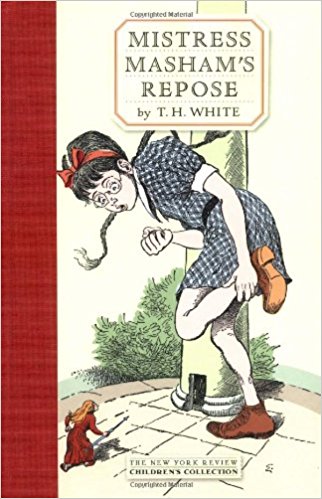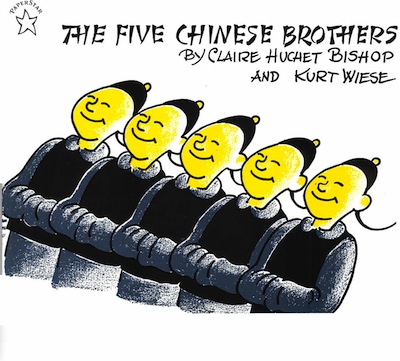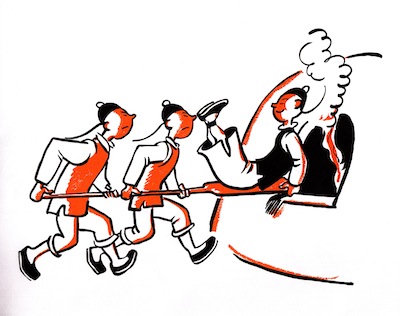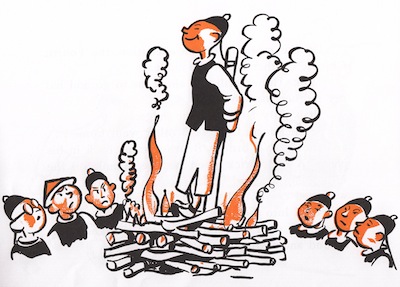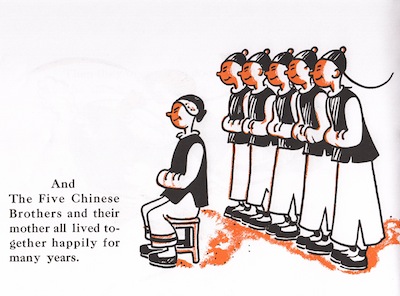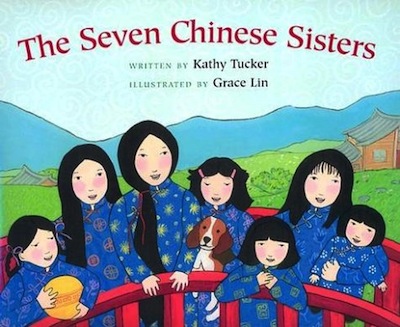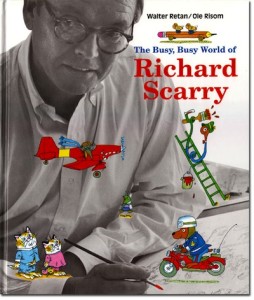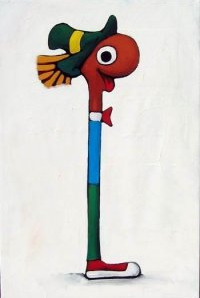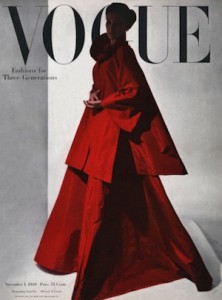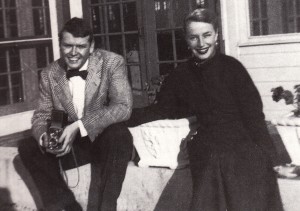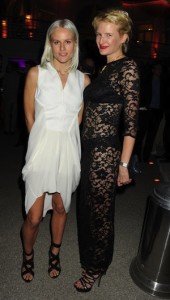Last week, during the 100 degree NYC heatwave, I popped over to the library to kill some time. [Side note: who else, when they hear the phrase “killing time” thinks about Tock from Phantom Tollbooth sobbing, “It’s bad enough wasting time without killing it”? ] I came across a gorgeous large-format book by French author-illustrator Benjamin Chaud called Little Bear’s Big House (2018).
In the story, a precocious little bear wanders into a house in the woods. Halfway through, Chaud gives us this showstopper: A cross section of the house so big and so detailed that your eye can slowly wander from room to room. (The book’s dimensions are 9″ x 14″ so it’s truly immersive.)

I posted a pic on Instagram and immediately got tons of comments from other picture book fans reminiscing about other cross-sections in picture books. There’s something completely captivating about these illustrations: They’re the 2D version of playing with dollhouses, simultaneously instilling in the reader a sense of wonder and also a sense of god-like mastery.
To start, there are the Richard Scarry classics. For many kids, these cutaway views of Busytown are the first cross-section pictures they ever see. The labeled illustrations are perfect for an adult reading with a child, making each moment something to talk about. At the same time, Scarry makes sure there’s something funny to laugh about with each vignette, so the pictures are not simply didactic.
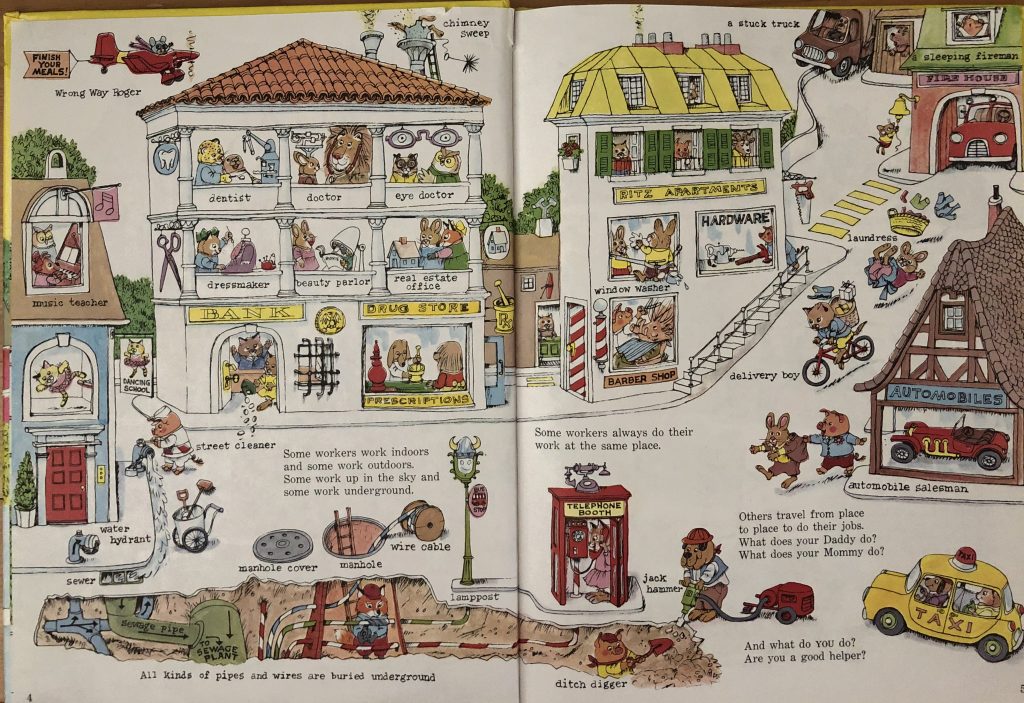
The other author that probably comes to mind with these sorts of illustrations is David Macaulay. The How Things Work author is legendary for the clarity of his explanations and the precision of his architectural and mechanical drawings. This is from Castle (1977):

In the UK, the writer-illustrator Stephen Biesty has single-handedly dominated the field of technical cross-sections with his Incredible Cross-Section series for Dorling Kindersley. He’s very influenced by Stephen Macaulay and the 1950s English illustrator Leslie Ashwell Wood.

While Biesty and Macauley’s illustrations explicate hidden mechanisms in the real world, my personal preference has always learned toward the fictional.
For instance, here’s Gyo Fujikawa’s take on the Old Woman Who Lived in a Shoe (featuring the Old Woman whaling each poor kid on their way inside—how amazing is this?!) :

There is also the lesser-known Babar book, Babar and Father Christmas (1940), one of the last written by Jean de Brunhoff. In this one, readers get a glimpse of Father Christmas’s house, including “the doll room, the soldier room, the train room … dwarfs’ dormitories, the lifts and the machine-rooms.”
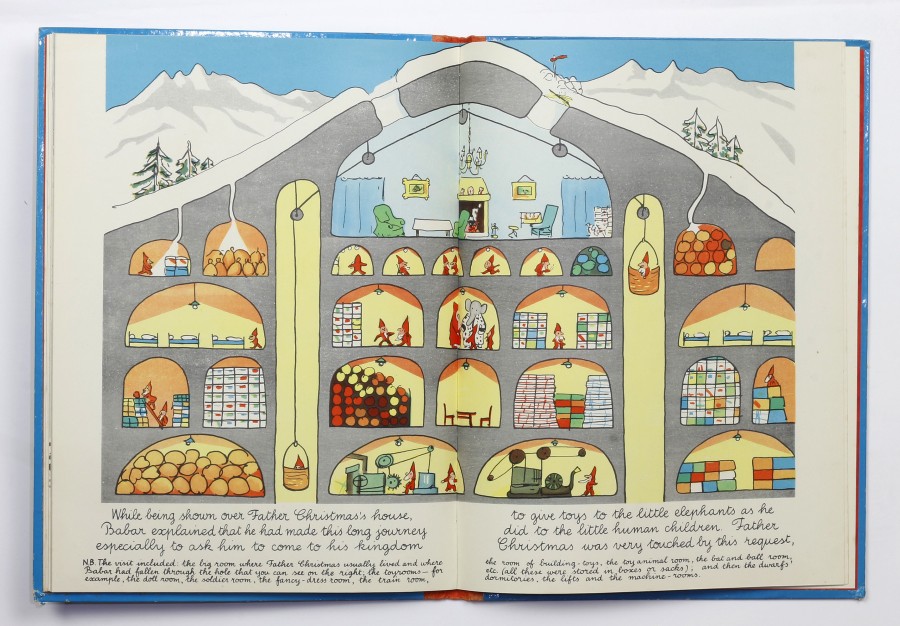
Are you familiar with The Big Green Book by Robert Graves, illustrated by none other than Maurice Sendak? I have to admit, I was not. It’s about a little boy who discovers a book of magic in the attic and learns all sorts of spells:
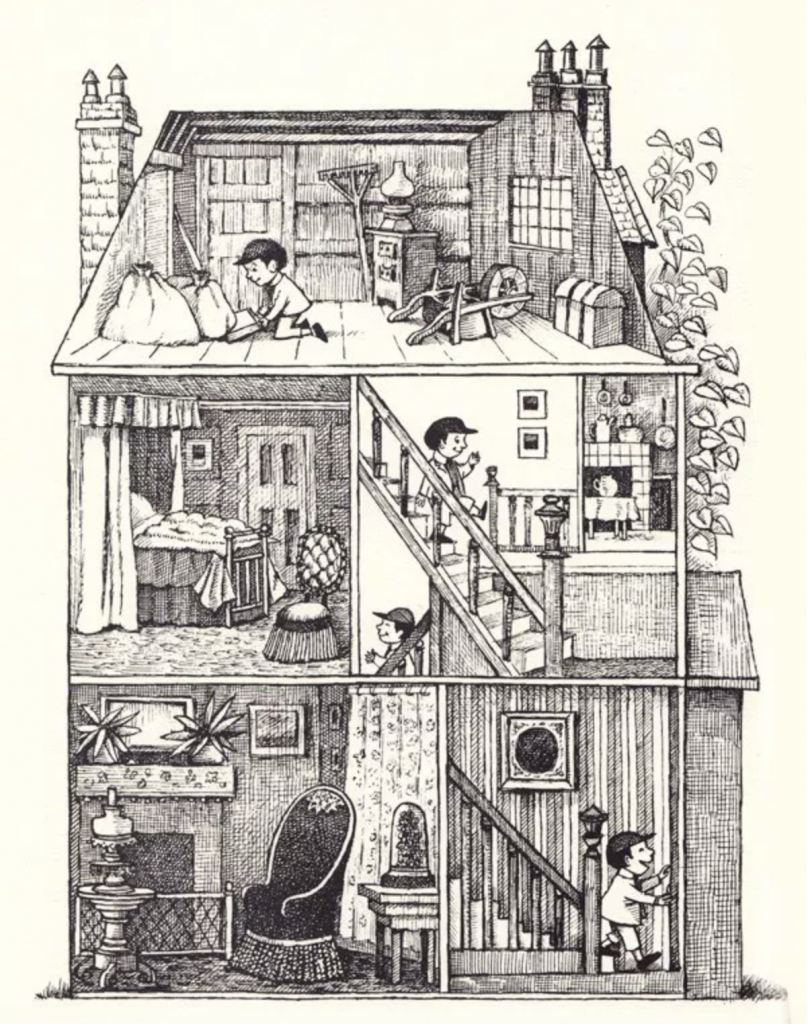
And here’s the inside of Pippi Longstocking’s house, as imagined by Dutch illustrator Carl Nicolaas Hollander (1934-1995):
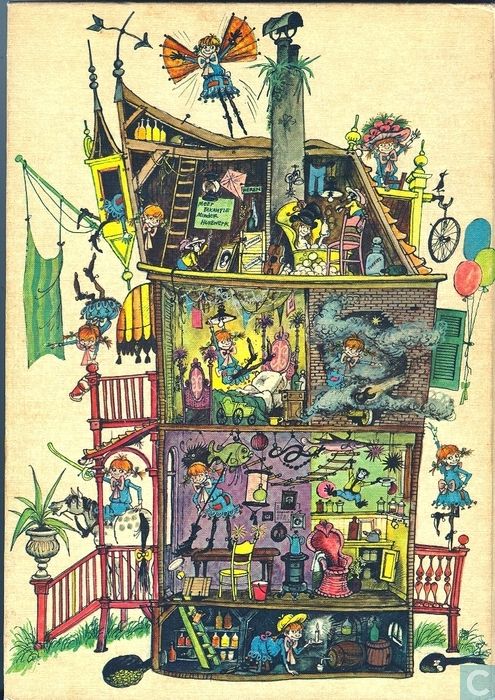
One series I learned about from a commenter on Instagram is the Brambly Hedge series by British author Jill Barklem. (The first in the series, Spring Story, came out in 1980.) The stories follow the adventures of a community of mice who live in the English countryside — the illustrations are very much in the tradition of Beatrix Potter and include some delightful cross-sections of the cozy mouse houses:
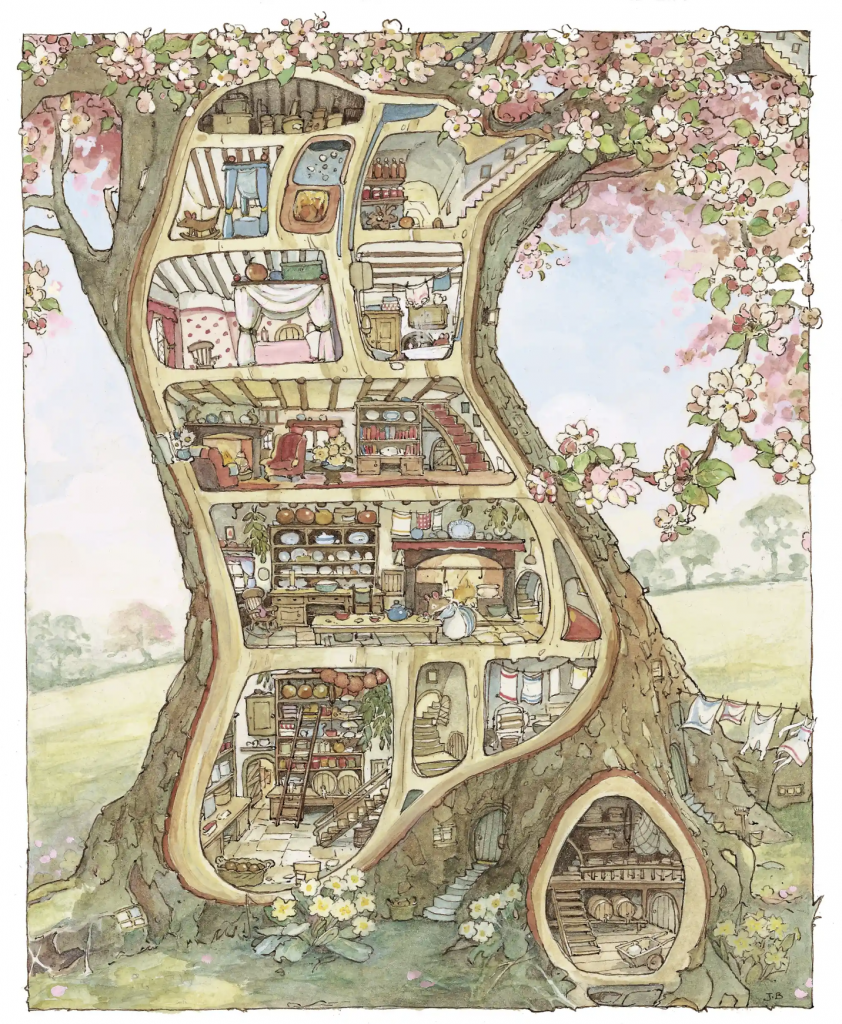
Not surprisingly, mice lend themselves well to these sorts of illustrations. When my daughter was little we loved reading Mary and The Mouse, the Mouse and Mary by Beverly Donofrio (2007). The illustrations by Barbara McClintock depict the parallel worlds of humans and mice, with the mice living directly beneath the floorboards of the family’s chic midcentury home:
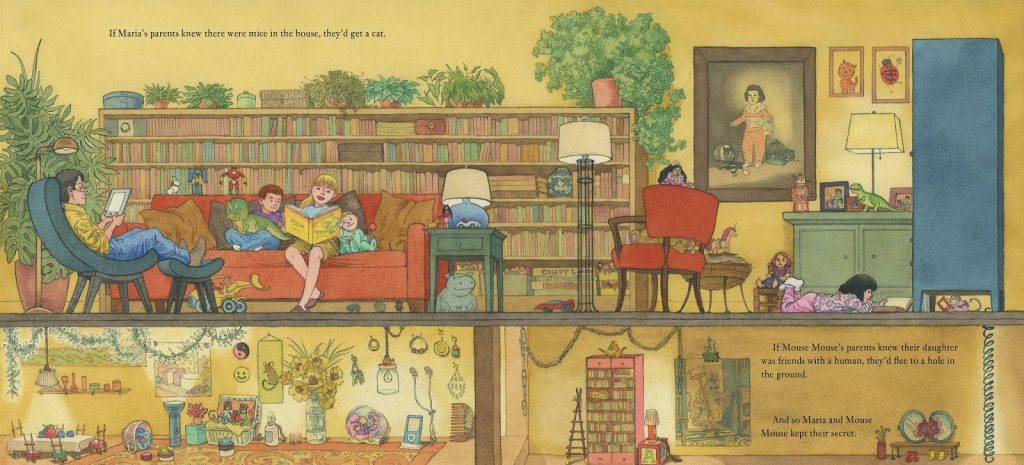
One of my all-time favorite writers and illustrators is William Pène du Bois, who gave us Twenty-One Balloons and William’s Doll. He wrote a book called The Three Policemen (I wrote about it previously here) which is totally charming but nothing all that special, except for the end pages which are unforgettable. They feature the cross-section of a fantastical ship designed to look like a sea serpent:

Here’s a book I learned about from interior designer Mara Miller, when I interviewed her for a story about designers’ favorite children’s books. It’s called The Fourteen Bears in Summer and Winter by Evelyn Scott (sadly, it’s out of print) and features the stylish homes of bears:
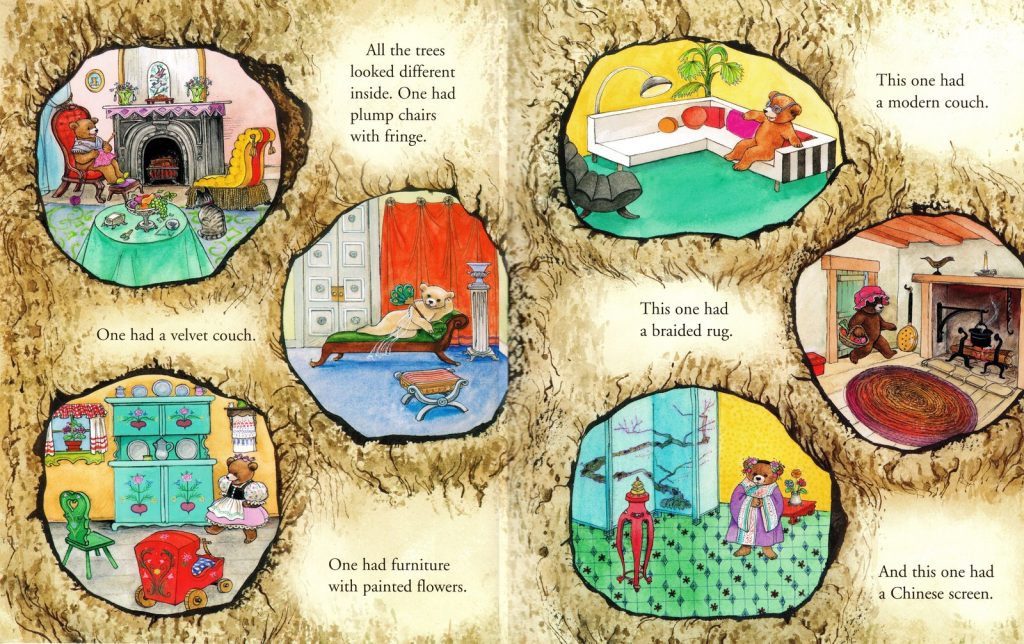
Speaking of bears, I am not a big fan of the Berenstain Bears. But this cross-section of their treehouse is pretty darn fun (note the basement Ping-Pong table):
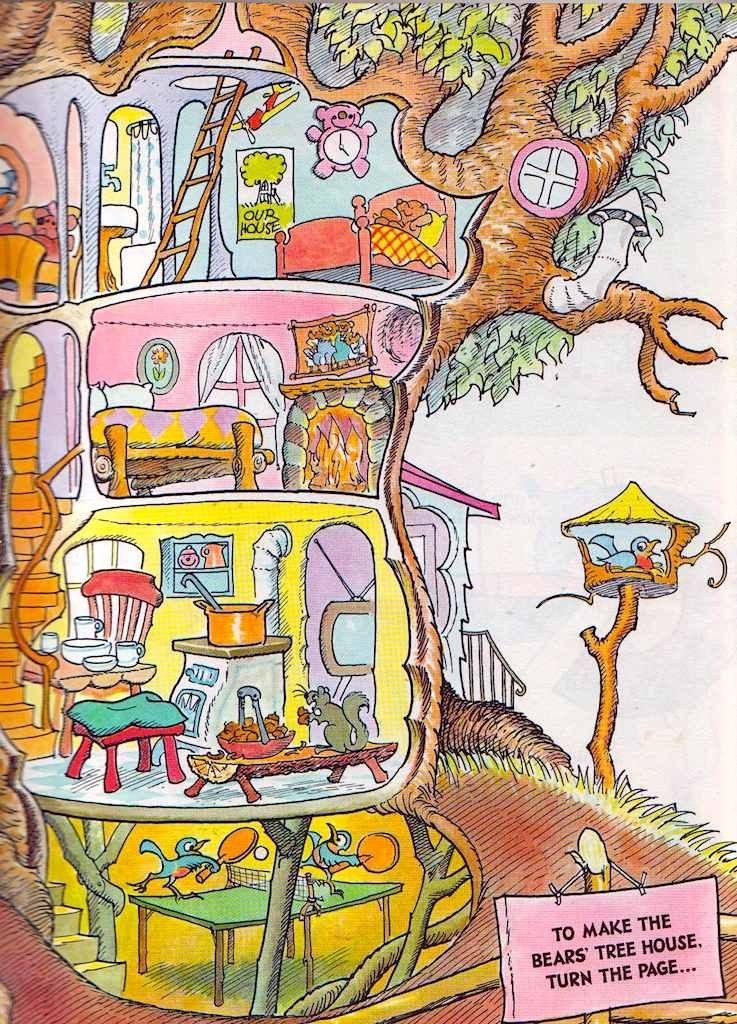
I am very fond of the illustrations of Japanese author Mitsumasa Anno. (Incidentally, Anno is still alive and is 93 years old!). This is from Anno’s Counting Book (1975):
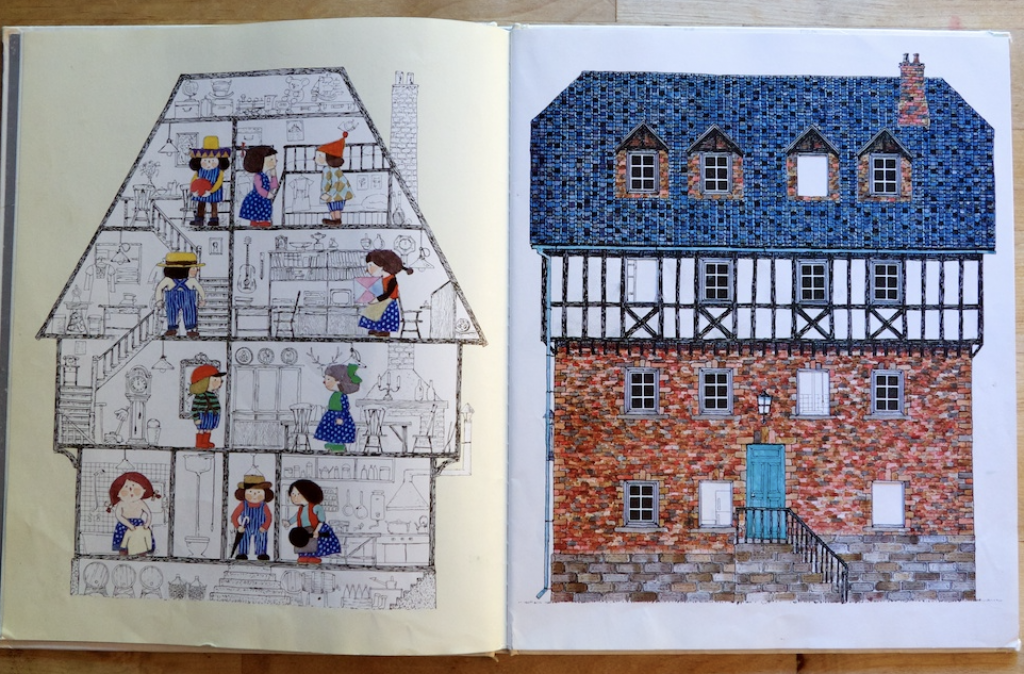
What else? Do you like gnomes?

There’s also the wordless book Full Moon Soup by Alistair Graham (2007), which is set in a baroque Fawlty Towers-type of hotel. It feels like The Sims!
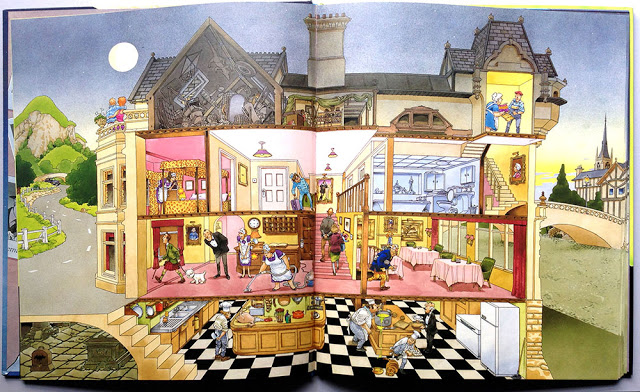
Sophie Blackall can do no wrong, in my opinion. Hello, Lighthouse (winner of the 2019 Caldecott) has this image of the interior of a lighthouse that feels absolutely perfect in every way, from the sage green interior walls to that tidy bed with single pillow.
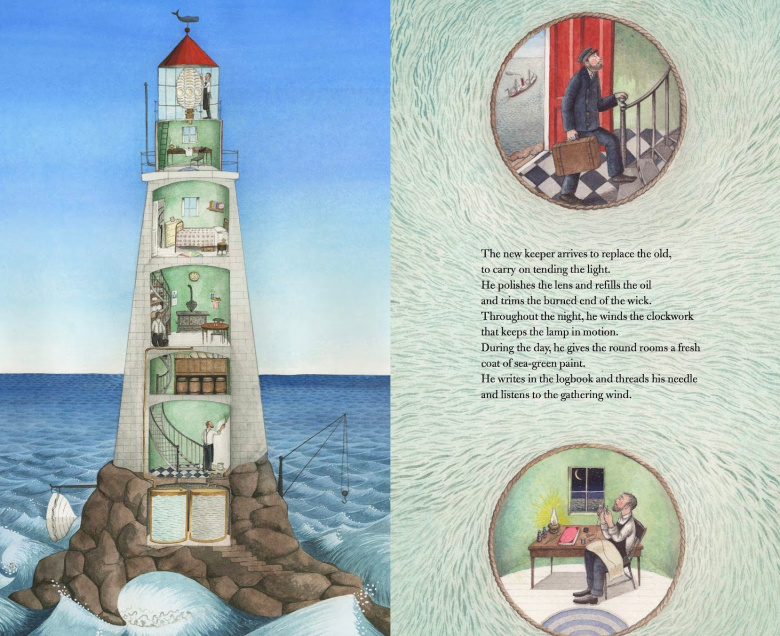
And now I will just leave you with this final cross-section, from David Macauley’s Toilet:

What good ones have I missed? Please tell me in the comments here or over on my Instagram @mrslittlebooks
Thanks for reading!




